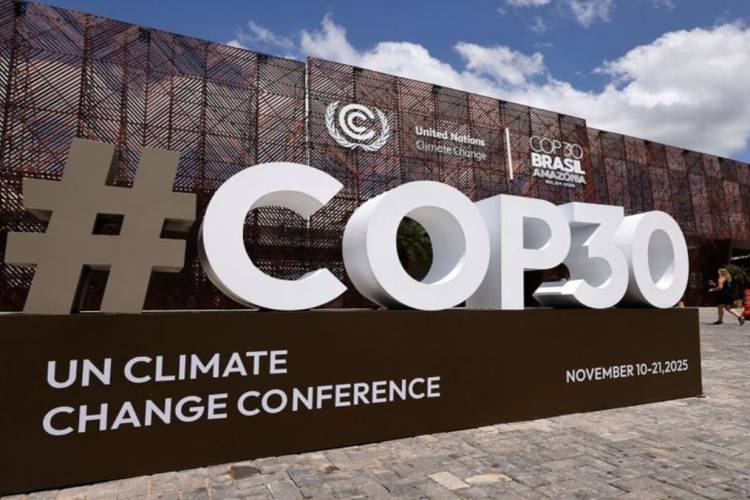The Conference of Parties (COP), the 30th edition of the annual United Nations (UN) taking place in Belem this year, has reached its mid point and while for a brief moment it appeared that India will be able to coax rich nations into paying, that hope has been dashed. The developed world has refused to address concerns over trade and finance raised by developing countries like India, China, or Jamaica.
India had reasserted the issue of climate finance India and speaking on behalf of the Like-Minded Developing Countries (LMDCs), the country said that developed nations were falling short of their “legal obligation” under Article 9.1 of the Paris Agreement. There were high hopes that at COP30, Article 9.1 of the Paris Agreement will be formally negotiated but this has been removed from the main agenda and referred to presidential consultations. This, along with another controversial issue viz unilateral trade agreements have been dropped.
READ | Bridging rural digital divide key to inclusive growth
Finance is the oldest fissure in global climate diplomacy and despite the urgency of climate adaptation and mitigation, there is a widening gap between what developing countries demand, and what rich nations are willing to deliver. This will erode the real progress on climate justice. Essentially, the developments at COP30 signal that the summit’s politics are still shaped by a persistent north-south trust gap, and that the core contention of who pays for losses, damage and transition, remains unresolved.
What is Article 9.1 and its significance
Article 9.1 anchors the legal expectation that developed countries will provide financial resources to help developing countries both adapt to climate change and pursue low-carbon development. For delegations from the Global South, invoking Article 9.1 at COP30 was a rightful demand for clarity on matters such as what counts as “climate finance,” predictable multi-year grant flows and a binding pathway to close the finance shortfall that continues to bog down climate ambition. India framed Article 9.1 as a legal obligation and not a voluntary pledge and pushed for an explicit COP decision to help this materialise.
The official rationale for declining this request was procedural and to avoid a polarising showdown in the plenary and to move contentious points into smaller consultations where compromise is more likely. In practice, removing Article 9.1 from the formal agenda reduces political pressure on wealthy countries to accept legally framed obligations in a public forum. It is now expected that the presidency will handle this alongside other sensitive items in closed consultations. Naturally, developing countries see this as neutering the issue. While the move will buy time for diplomacy, it will also buy distance from accountability.
COP29’s Baku to Belém roadmap set an aspirational target of mobilising $1.3 trillion a year by 2035 for climate action in developing countries, recognising the seriousness of scaling finance. However, despite the climate urgency, structural inequality continues to shape outcomes at UN climate talks.
The consequences of the failed attempt will resonate locally. When negotiators return home without a firm framework for predictable, grant-based finance and clear accounting rules, it becomes harder for governments to justify stronger, costlier climate commitments (NDCs). Ambition in the Global South is conditional on resources and technology transfer. Simply put, the developing world cannot finance climate mitigation and adaptation without strong support from the developed world.
According to the International Energy Agency (IEA) estimates, clean-energy investment in emerging and developing economies must triple from $770 billion in 2022 to $2.2–$2.8 trillion annually by the early 2030s. But, the definition of climate finance remains contested. Many developed nations double-count loans, export credits, or market-rate funding as climate support. India has therefore demanded a universally accepted definition and a transparent MRV system (Measurement, Reporting, Verification) to track genuine financial flows.
Has COP delivered anything?
The COP process has achieved very important milestones that include the agreement on the 1.5C target, the establishment of the loss and damage fund, and the compromise of annual pledges of $100 billion to the green climate fun, but the process is too slow and inefficient, and not able to properly address the striking inequalities on who bears the responsibility and the burden of climate change. However, the problems with COP reflect wider problems with justice in the world.
When developing countries want something like grants to help adapt their economies and infrastructure, and Europe or the US does not want to give it to them, the winner is clear. It is the will of the developed world that counts.
More and more experts now say that the COP process has to change into a system that focuses more on results. Instead of long conversations that conclude with vague statements, the focus should be on putting things into action in the region and the local area. An impartial group that checks on progress, counts results, and finds out where money is really going could help countries. Belém can still avoid a defeat but only if the rest of the summit transforms arcane consultations into transparent commitments.
COP should draw lessons from real-world cooperation models like the International Solar Alliance (ISA), where countries pool technical expertise, mobilise finance and implement concrete projects on the ground. The ISA model shows that smaller, mission-focused alliances can move faster and deliver tangible outcomes. By contrast, a mega global conference that must reconcile vastly different national interests often struggles to produce actionable agreements.

